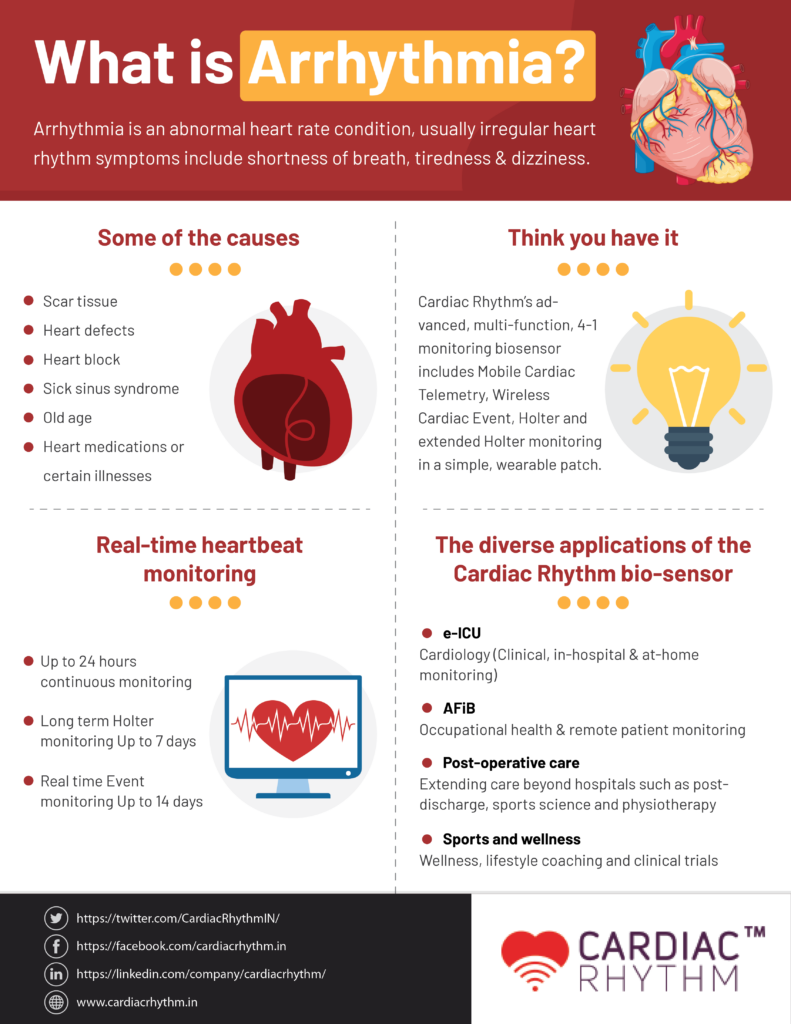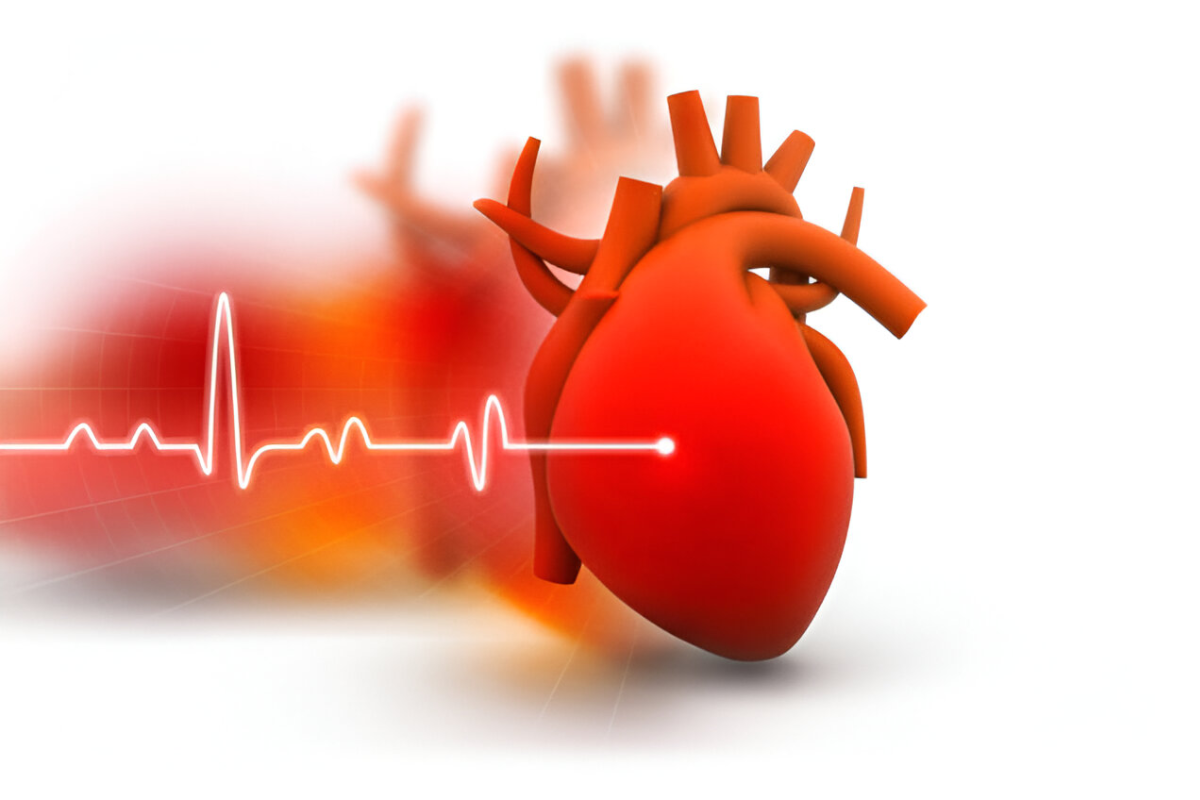As an experienced writer, I’m excited to provide you with a comprehensive guide to understanding arrhythmia. In this article, we’ll delve into the intricacies of this condition, exploring its definition, types, causes, symptoms, diagnosis, treatment options, and more. By the end, you’ll have a thorough understanding of arrhythmia and be equipped with the knowledge to maintain a healthy heart.
Introduction to Arrhythmia
Arrhythmia, also known as a heart rhythm disorder, is a condition where the heart beats irregularly, either too fast, too slow, or with an irregular pattern. This can occur due to various factors, such as underlying health conditions, lifestyle choices, or genetic predisposition. Understanding arrhythmia is crucial as it can have significant implications for one’s overall well-being and can lead to potentially serious complications if left untreated.
What is an Arrhythmia?

An arrhythmia is a problem with the rate or rhythm of the heartbeat. In a healthy heart, the electrical signals that coordinate the heart’s contractions work seamlessly, ensuring a regular and efficient pumping of blood throughout the body. However, in the case of an arrhythmia, these electrical signals become disrupted, leading to an irregular heart rhythm.
Arrhythmias can manifest in various ways, ranging from a fluttering sensation in the chest to a racing or slow heartbeat. The severity of the condition can vary, with some arrhythmias being relatively harmless, while others can be life-threatening if left untreated.
Types of Arrhythmia
Arrhythmias can be classified into several different types, each with its own unique characteristics and underlying causes. Some of the most common types of arrhythmia include:
- Atrial Fibrillation (AFib): This is the most common type of arrhythmia, characterized by an irregular and often rapid heartbeat in the upper chambers of the heart (the atria).
- Ventricular Tachycardia: This condition involves a rapid heartbeat in the lower chambers of the heart (the ventricles), which can be life-threatening if not treated promptly.
- Bradycardia: A slow heart rate, usually defined as a resting heart rate of less than 60 beats per minute.
- Premature Ventricular Contractions (PVCs): These are extra, abnormal heartbeats that originate in the ventricles, causing a skipped or fluttering sensation in the chest.
- Supraventricular Tachycardia (SVT): This type of arrhythmia involves a rapid heartbeat that originates in the upper chambers of the heart, above the ventricles.
Understanding the different types of arrhythmia is crucial for accurate diagnosis and effective treatment.
Causes of Arrhythmia
Arrhythmias can have a variety of underlying causes, including:
- Structural Heart Conditions: Conditions such as coronary artery disease, heart valve problems, or congenital heart defects can disrupt the heart’s electrical system and lead to arrhythmias.
- Electrolyte Imbalances: Imbalances in minerals like potassium, sodium, or calcium can affect the heart’s electrical signals and trigger arrhythmias.
- Stress and Anxiety: Emotional stress and anxiety can stimulate the autonomic nervous system, which can contribute to the development of certain arrhythmias.
- Certain Medications: Some prescription and over-the-counter drugs, as well as recreational substances, can have side effects that can lead to arrhythmias.
- Lifestyle Factors: Factors such as excessive alcohol consumption, caffeine intake, and lack of exercise can increase the risk of developing arrhythmias.
- Underlying Medical Conditions: Conditions like thyroid disorders, diabetes, and lung diseases can also contribute to the development of arrhythmias.
Understanding the underlying causes of arrhythmia is crucial for developing an effective treatment plan.
Read More –
Symptoms and Signs of Arrhythmia
Arrhythmias can present with a wide range of symptoms, which can vary depending on the type and severity of the condition. Some common symptoms and signs of arrhythmia include:
- Palpitations: A fluttering, racing, or pounding sensation in the chest
- Chest Pain or Discomfort: A feeling of tightness, pressure, or discomfort in the chest
- Dizziness or Lightheadedness: A feeling of unsteadiness or fainting
- Shortness of Breath: Difficulty breathing or a feeling of breathlessness
- Fatigue or Weakness: Unexplained tiredness or lack of energy
- Swelling in the Legs or Abdomen: A sign of potential heart failure
- Irregular Pulse: An abnormal or irregular heartbeat that can be felt in the neck, wrist, or chest
It’s important to note that some individuals with arrhythmia may not experience any noticeable symptoms, making the condition challenging to detect without medical evaluation.
Diagnosis of Arrhythmia
Diagnosing arrhythmia typically involves a combination of various tests and examinations. Some of the common diagnostic tools used to identify and evaluate arrhythmias include:
- Electrocardiogram (ECG or EKG): This test records the electrical activity of the heart, helping to identify the type and pattern of the arrhythmia.
- Holter Monitor: A portable device worn for 24-48 hours that continuously records the heart’s electrical activity, allowing for the detection of intermittent arrhythmias.
- Event Recorder: A device similar to a Holter monitor, but it is only worn when the individual experiences symptoms, capturing the heart’s activity during those episodes.
- Echocardiogram: This imaging test uses sound waves to create a detailed picture of the heart, helping to identify any structural abnormalities that may be contributing to the arrhythmia.
- Stress Test: This test evaluates the heart’s function and electrical activity during physical activity, which can help diagnose arrhythmias that are triggered by exercise.
- Electrophysiology Study: This invasive procedure involves inserting catheters into the heart to map the electrical signals and identify the source of the arrhythmia.
The healthcare provider will determine the appropriate diagnostic tests based on the individual’s symptoms, medical history, and the suspected type of arrhythmia.
Treatment Options for Arrhythmia
The treatment for arrhythmia depends on the type, severity, and underlying cause of the condition. Some common treatment options include:
- Medications: Antiarrhythmic drugs, anticoagulants, and other medications may be prescribed to regulate the heart’s rhythm, prevent blood clots, and manage symptoms.
- Cardioversion: This procedure uses electrical shocks or medications to restore a normal heart rhythm in individuals with certain types of arrhythmias.
- Catheter Ablation: This minimally invasive procedure uses heat or cold energy to destroy the specific areas of the heart that are causing the arrhythmia.
- Pacemaker or Implantable Cardioverter-Defibrillator (ICD): These devices are surgically implanted to help regulate the heart’s rhythm and prevent life-threatening arrhythmias.
- Lifestyle Modifications: Changes in diet, exercise, stress management, and the avoidance of certain triggers can help manage and prevent arrhythmias.
The healthcare provider will work closely with the individual to develop a personalized treatment plan based on the specific needs and circumstances.
Lifestyle Changes for Managing Arrhythmia
In addition to medical treatments, making certain lifestyle changes can play a crucial role in managing arrhythmia and maintaining a healthy heart. Some recommended lifestyle modifications include:
- Healthy Diet: Adopting a heart-healthy diet rich in fruits, vegetables, whole grains, and lean proteins can help manage underlying conditions and reduce the risk of arrhythmias.
- Regular Exercise: Engaging in regular physical activity, such as brisk walking, swimming, or cycling, can help strengthen the heart and improve overall cardiovascular health.
- Stress Management: Practicing stress-reducing techniques, such as meditation, yoga, or deep breathing, can help minimize the impact of emotional triggers on the heart’s rhythm.
- Limiting Stimulants: Reducing the consumption of caffeine, alcohol, and nicotine can help prevent arrhythmias triggered by these substances.
- Maintaining a Healthy Weight: Achieving and maintaining a healthy body weight can help reduce the strain on the heart and minimize the risk of developing arrhythmias.
- Monitoring and Reporting Symptoms: Regularly monitoring any changes in heart rhythm and promptly reporting them to a healthcare provider can facilitate early intervention and effective management.
Making these lifestyle modifications can significantly improve the overall management of arrhythmia and reduce the risk of complications.
Complications and Risks Associated with Arrhythmia
Arrhythmias, if left untreated or unmanaged, can lead to several complications and health risks, including:
- Stroke: Certain types of arrhythmias, such as atrial fibrillation, can increase the risk of blood clots forming, which can then travel to the brain and cause a stroke.
- Heart Failure: Persistent or severe arrhythmias can weaken the heart’s ability to pump blood effectively, leading to heart failure.
- Sudden Cardiac Arrest: Some types of arrhythmias, such as ventricular tachycardia or fibrillation, can cause the heart to suddenly stop beating, leading to sudden cardiac arrest.
- Reduced Quality of Life: Frequent or persistent arrhythmia symptoms can negatively impact an individual’s daily activities, sleep, and overall quality of life.
- Increased Risk of Hospitalization: Uncontrolled arrhythmias can lead to more frequent hospitalizations and healthcare utilization.
It’s crucial to work closely with a healthcare provider to manage arrhythmia and minimize the risk of these potentially serious complications.
Prevention and Tips for Maintaining a Healthy Heart
While some risk factors for arrhythmia, such as genetic predisposition or underlying medical conditions, may be beyond our control, there are several steps we can take to prevent the development of arrhythmias and maintain a healthy heart:
- Adopt a Healthy Lifestyle: Maintain a balanced diet, engage in regular physical activity, manage stress, and avoid or limit the consumption of substances like alcohol, tobacco, and caffeine.
- Monitor and Manage Underlying Conditions: Closely monitor and effectively manage any existing medical conditions, such as high blood pressure, diabetes, or thyroid disorders, as they can contribute to the development of arrhythmias.
- Attend Regular Check-ups: Regularly schedule appointments with a healthcare provider for comprehensive cardiovascular evaluations, including screening for arrhythmias.
- Learn to Recognize Symptoms: Familiarize yourself with the common symptoms of arrhythmia and promptly report any changes in your heart rhythm to your healthcare provider.
- Practice Stress Management: Incorporate stress-reducing techniques, such as meditation, yoga, or deep breathing, into your daily routine to help maintain a healthy heart.
- Stay Hydrated and Maintain Electrolyte Balance: Ensure adequate hydration and a balanced intake of electrolytes, such as potassium and magnesium, which are essential for proper heart function.
By implementing these preventive measures and maintaining a proactive approach to heart health, you can significantly reduce the risk of developing arrhythmias and enjoy a healthier, more fulfilling life.
Frequently Asked Questions about Arrhythmia
1. What is the difference between an arrhythmia and a heart attack?
- An arrhythmia is a problem with the rate or rhythm of the heartbeat, while a heart attack is caused by a blockage in the blood supply to the heart, leading to damage to the heart muscle.
2. Can stress cause arrhythmias?
- Yes, emotional stress and anxiety can stimulate the autonomic nervous system, which can contribute to the development of certain types of arrhythmias.
3. Is arrhythmia always a serious condition?
- No, not all arrhythmias are serious. Some types, such as premature ventricular contractions (PVCs), are relatively common and may not require immediate treatment. However, certain arrhythmias, like ventricular tachycardia, can be life-threatening and require prompt medical attention.
4. Can arrhythmia be cured?
- While arrhythmia cannot always be cured, it can often be effectively managed through a combination of medications, lifestyle changes, and medical procedures, such as catheter ablation or the implantation of a pacemaker or defibrillator.
5. Is there a link between arrhythmia and other heart conditions?
- Yes, arrhythmias can be associated with various underlying heart conditions, such as coronary artery disease, heart valve problems, or congenital heart defects. Addressing the underlying condition can often help manage the associated arrhythmia.If you or a loved one are experiencing any symptoms of arrhythmia, it’s important to seek medical attention promptly. Our team of experienced healthcare professionals is dedicated to providing personalized care and developing a comprehensive treatment plan to help you manage your condition and maintain a healthy heart. Contact us today to schedule a consultation and take the first step towards understanding and addressing your arrhythmia.

